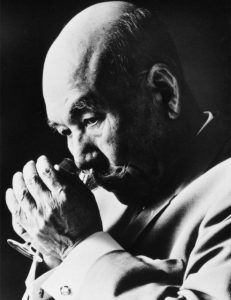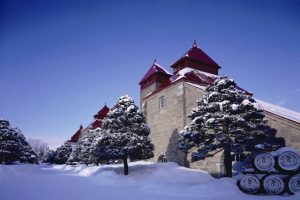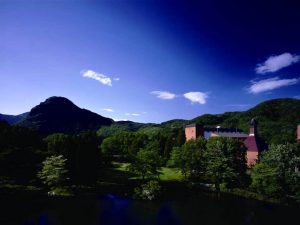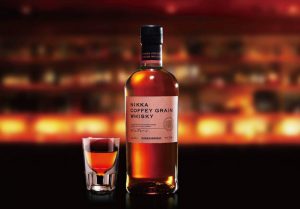This year Nikka Whisky celebrates its 80th birthday and part of the festivities saw an educational and tasting of the range at Bam-Bou in London.
Japanese Whisky is one of the categories the BarLifeUK knowledge banks were a bit low on, so we jumped at the chance to get some education (as well as whisky) inside us.
Over for the session was the current Chief Blender, Tadashi Sakuma, who was to lead us through the tasting but before we could get our lips wet there was, what turned out to be, a fascinating talk all about the history and production of Nikka.
The Man Who Started It All
The Nikka story starts with one man by the name of Masataka Taketsuru, who was born in Japan in 1894. It was little surprise his future lay in alcohol as his family were Sake producers. However during his university days he got interested in ‘western’ spirits which was to eventually lead him to become the first person to make a proper Japanese whisky.

It, unsurprisingly, wasn’t the easiest of journeys. Not least the physical journey to Scotland from Japan, which in 1918 was an arduous sea voyage (although still quicker and more comfortable than Ryan Air).
He was sent to Scotland by his first employer, leading liquor company Settsu Shuzo, who had designs on producing a Japanese whisky. His time in Scotland shaped his life and introduced him to many of the most important people in it.
The first of these people was Professor William, who he met when he enrolled at Glasgow University. Professor William became his mentor and set him up with apprenticeships at Longmorn, James Calder and Hazelburn Distilleries.
These early apprenticeships were to mould his distilling career as he learnt the arts of malt whisky and grain whisky production (the latter in a Coffey still), as well as that of blending. The blending knowledge he gained at Hazelburn, where he met another mentor in the form of Dr Ines.
It wouldn’t be a decent story without a love interest and that appeared in the form of local girl Rita. Despite the resistance of both their families they married in 1920 and later that year they both journeyed back to Japan. The importance that Rita played in Masataka’s life has led many to call her the Mother of Japanese whisky.
Unfortunately their return wasn’t as triumphant as Masataka may have wished. Settsu Shuzo had shelved the plans to produce Japanese whisky and a couple of years after his return Masataka quit the company. His wealth of knowledge wasn’t to go wasted for long as another liquor company by the name of Kotobukiya (known these days as Suntory) snapped him up to lead their Japanese whisky team.
He was in-charge of the construction of the now famous Yamazaki distillery and from there produced the first true Japanese whisky. Ten years on he decided it was time to set up on his own and he parted company with Kotobukiya.
Nikka Is Born
Actually that’s not entirely true. The company was originally called Dai Nippon Kaju which translates into ‘The Great Japan Juice Company’ (shortening to become Nikka in 1952). As we know good whisky takes time and to make ends meet whilst his whisky was maturing he produced a variety of apple products.
Masataka planned to produce his ideal whisky which meant he had 4 essential factors to achieve.

Location similar to Scotland
Variety of malt whisky
Grain whisky distiller in Coffey stills
Blending skills
His first distillery was the Yoichi Distillery, whose site was picked due to its similarity to Scotland. It’s located a kilometre from the Sea of Japan giving the whisky a salty flavour and on the Yoichi River which provides the water source. It’s location in the North of Japan also provides cool temperatures all year round again mirroring the Scottish aging conditions.
The Yoichi Distillery uses pot still distillation with 4 wash stills and 2 spirit stills which are heated by natural coal even today. Producing exclusively malt whisky it was opened in 1934 and produced its first whisky in 1940.
The second of Nikka’s distilleries was founded 35 years after Yoichi, the Miyagikyo Distillery is located in the very different surrounds of a mountainous inland area of Japan (more central on your map of Japan). Like Yoichi, Miyagikyo gets its water from the local river, in this case the Nikkawa River.

Oh and if you think you are being clever spotting the river is called Nikkawa think again, that is purely coincidental, it was the quality of the water Masataka was after not the name.
Unlike the first distillery, Miyagikyo produces both malt and grain whisky. The malt whisky is produced in 4 wash and 4 spirit stills but are heated at a lower temperature using indirect steam.
The heat source isn’t the only difference between the two distilleries. Yoichi’s stills have a straight head with a descending lyne arm with a warm tub condenser giving a bold and smoky result, whereas Miyagikyo uses a bulge still with an ascending lyne arm with a shell and tube condenser resulting in a lighter and softer product.
The grain whisky uses a method Masataka learnt in Scotland all those years ago, that of the Coffey still. There are two sets of Coffey stills at the distillery and Nikka have been running two sets for over 50 years.
The Range
It is these different types of whisky that gives the Nikka range such a broad variation in flavours.

We were fortunate enough to taste the Single Malt Yoichi 15 year old (45%), Single Malt Miyagikyo 12 year old (45%), Taketsuru Pure Malt 17 year old (43%), Nikka Coffey Grain (45%) and their best selling brand in Europe, From the Barrel (51.4%).
The full range is superb and being able to taste them together and compare them against each other gave a real insight into the subtle differences between them all. If you haven’t had the chance to do this yet we strongly suggest you get on it, try tracking down your local Marussia Beverages rep.
Our afternoon ended with Bam-Bou bar manager Ladislav Piljar knocking up some superb Nikka cocktails inspired by the Nikka Bento Box Experience.

